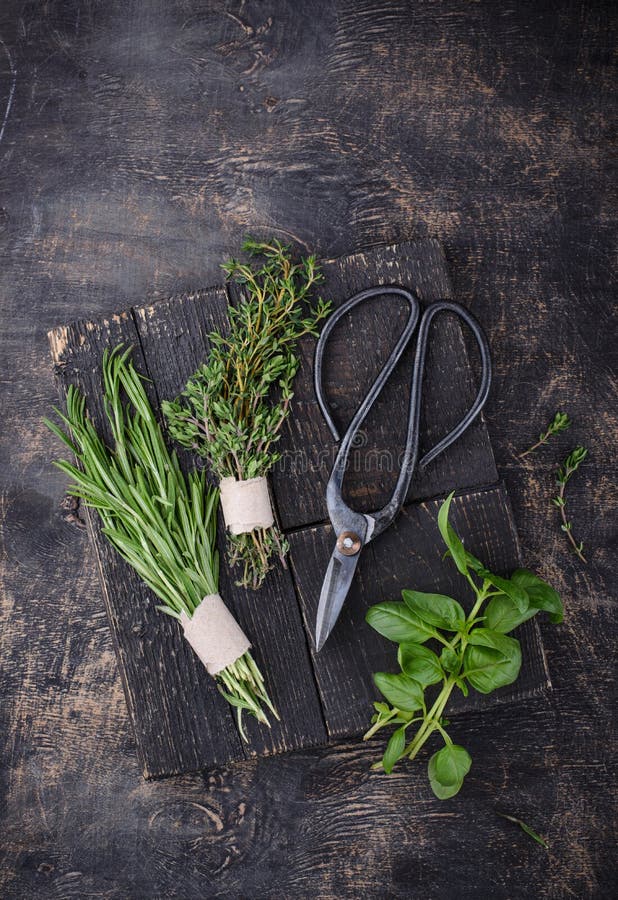Understanding Rosemary & Thyme: From Garden To Plate

Table of Contents
Cultivating Rosemary & Thyme
Choosing the Right Variety
Rosemary and thyme boast a variety of cultivars, each with unique characteristics. Selecting the right variety is crucial for success.
- Rosemary: Consider prostrate rosemary for ground cover, or upright varieties like 'Arp' or 'Miss Jessopp's Upright' for taller plants. Flavor profiles vary slightly, with some exhibiting a more pronounced piney note than others.
- Thyme: Lemon thyme offers a zesty citrus twist, while common thyme provides a classic earthy flavor. Creeping thyme is excellent for ground cover, while English thyme is a reliable choice for culinary use. Consider your preferred flavor and the space available in your herb garden when making your selection. Hardiness zones also play a key role – choosing varieties suitable for your climate is essential.
Planting & Soil Preparation
Both rosemary and thyme thrive in well-drained soil with plenty of sunshine. Here's a step-by-step guide:
- Soil Preparation: Amend heavy clay soil with compost or other organic matter to improve drainage. Ensure the soil is loose and aerated.
- Planting Seeds: Sow seeds indoors 6-8 weeks before the last frost, then transplant outdoors once the danger of frost has passed.
- Using Starter Plants: Planting established plants from a nursery guarantees a quicker harvest. Choose healthy plants with vibrant foliage.
- Spacing: Allow adequate spacing between plants to promote good air circulation and prevent overcrowding.
Care and Maintenance
Consistent care will reward you with abundant harvests.
- Watering: Water deeply but infrequently, allowing the soil to dry slightly between waterings. Overwatering can lead to root rot.
- Fertilizing: A light feeding in spring with a balanced fertilizer is usually sufficient. Avoid over-fertilizing, which can reduce the essential oil content in the herbs.
- Pruning: Prune regularly to maintain shape and encourage bushier growth. Harvesting itself acts as a form of pruning.
- Pest and Disease Control: Rosemary and thyme are relatively pest-resistant. However, monitor for aphids or spider mites and take action if needed. Good air circulation helps prevent fungal diseases.
Harvesting Rosemary & Thyme
Knowing When to Harvest
The optimal time to harvest is when the plants are actively growing, typically in spring and summer, before they flower. This maximizes flavor and essential oil content.
Proper Harvesting Techniques
Harvesting correctly ensures continued growth and abundant yields.
- Pruning: Use sharp pruning shears to snip stems, removing about a third of the plant's growth at a time. This encourages bushier growth.
- Cutting Sprigs: Carefully snip individual sprigs as needed.
Preserving Your Harvest
Preserving your herbs extends their flavorful life.
- Drying: Bundle sprigs and hang them upside down in a dark, dry, and well-ventilated area. Once completely dry, store in airtight containers.
- Freezing: Chop fresh herbs and store them in freezer-safe bags or containers.
- Infusing in Oil: Submerge fresh herbs in olive oil and store in a cool, dark place for several weeks. This creates flavorful herb-infused oil for cooking.
Cooking with Rosemary & Thyme
Rosemary Recipes
Rosemary's robust, piney flavor pairs beautifully with roasted meats, hearty soups, and crusty breads.
- Rosemary Roasted Chicken: A classic combination, highlighting rosemary's ability to impart deep flavor. [Link to Recipe]
- Rosemary and Potato Soup: A comforting and flavorful soup perfect for cooler evenings. [Link to Recipe]
- Rosemary focaccia bread: the aroma alone is worth it! [Link to recipe]
Thyme Recipes
Thyme's subtle, earthy notes complement a wide range of dishes.
- Classic Chicken Thyme: A simple yet elegant dish, perfect for weeknight dinners. [Link to Recipe]
- Thyme Roasted Vegetables: Roasting vegetables with thyme brings out their natural sweetness. [Link to Recipe]
- Thyme and mushroom risotto: a culinary experience! [Link to Recipe]
Combining Rosemary and Thyme
The complementary flavors of rosemary and thyme create a delightful synergy in many recipes.
- Try adding both herbs to your favorite roast, or use them together in a marinade for grilled meats.
- Experiment with combining rosemary and thyme in herb butters or sauces. The possibilities are endless!
Conclusion
Understanding Rosemary & Thyme involves a journey from seed to plate, encompassing cultivation, harvesting, and culinary exploration. By following these guidelines, you can enjoy the unparalleled flavor and aroma of fresh, homegrown herbs. The benefits of growing your own culinary herbs are numerous: freshness, cost savings, and the sheer satisfaction of nurturing your own herb garden. Start your culinary journey with understanding rosemary and thyme today! Begin growing your own herbs and unlock a world of flavor. [Link to seed supplier or gardening guide]

Featured Posts
-
 Metro Detroit To See Sunshine After A Cool Monday
May 31, 2025
Metro Detroit To See Sunshine After A Cool Monday
May 31, 2025 -
 Haciosmanoglu Nun Macaristan Seyahati Amaclar Ve Goeruesmeler
May 31, 2025
Haciosmanoglu Nun Macaristan Seyahati Amaclar Ve Goeruesmeler
May 31, 2025 -
 How To Build A Good Life A Holistic Approach To Wellbeing
May 31, 2025
How To Build A Good Life A Holistic Approach To Wellbeing
May 31, 2025 -
 Solving The May 1 Nyt Mini Crossword Focus On Marvel The Avengers
May 31, 2025
Solving The May 1 Nyt Mini Crossword Focus On Marvel The Avengers
May 31, 2025 -
 Barcelona Open Alcaraz Reaches Last 16
May 31, 2025
Barcelona Open Alcaraz Reaches Last 16
May 31, 2025
